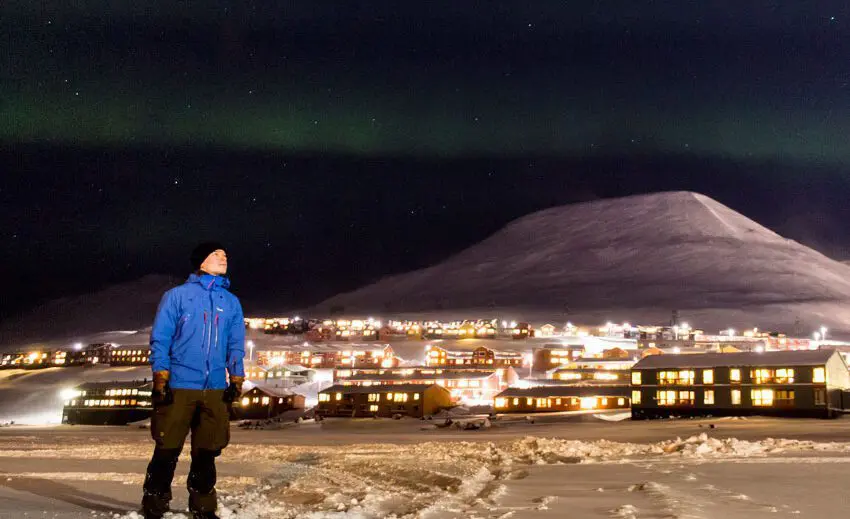Solar proton impact in the middle atmosphere

Erkka Heino. Photo: Emma Bland/UNIS.
Top image by Emma Bland/UNIS.
PhD candidate Erkka Heino has studied the spatial impact of solar proton events in the Earth’s atmosphere. His research shows that current proton forcing in climate models significantly overestimates the impact area of solar proton events. Heino will defend his thesis on Wednesday 18 December at UNIS.
13 December 2019
Press release from the University Centre in Svalbard (UNIS) and UiT – The Arctic University of Norway
Solar proton events (SPEs) are large eruptions of high energy particles from the Sun that, in the case of Earth-directed SPEs, cause large-scale ionisation in the Earth’s middle atmosphere. The ionisation in the Earth’s middle atmosphere leads to chemical changes, changes in the energy budget of the middle atmosphere, and radio wave absorption. The accurate implementation of the spatial impact of solar protons and other particle ionisation sources in climate models is necessary to understand the role of energetic particle precipitation in natural climate variability. Proton precipitation is typically implemented in climate models as uniform precipitation poleward of a static latitude, although in reality, the access of solar energetic particles into the Earth’s atmosphere is limited in geomagnetic latitude by the particles’ energy, the varying conditions of the interplanetary magnetic field and the solar wind, and the distortion of the Earth’s magnetic field.
The spatial impact of solar proton events in the Earth’s atmosphere is studied in the thesis by comparing modelling results with riometer (an instrument used to quantify the amount of electromagnetic-wave ionospheric absorption in the atmosphere) observations, and by employing a new approach of using routine background radio noise measurements from ionospheric high frequency radars.
Based on the research presented in the thesis, current proton forcing in climate models significantly overestimates the impact area of solar proton events. The implementation of more realistic proton forcing is therefore recommended for future studies of solar proton event impact on the atmosphere and natural climate variability.
Dissertation
Erkka Heino will defend his doctoral thesis entitled “Spatial extent of solar proton impact in the Earth’s atmosphere – Observations and modeling”, on 18 December at 13:15. He will give a trial lecture at 10:15 the same day entitled “The paleoclimatic record of solar activity – how do we know and what does it teach us?” Both lectures will take place in Lassegrotta at UNIS.
The committee consists of Dr. Andrew Kavanagh, British Antarctic Survey (1. opponent); Professor Esa Turunen, Sodankylä Geophysical Observatory, University of Oulu, Finland (2. opponent) and Professor Ulf-Peter Hoppe, Norwegian Defense Research Establishment (FFI) and Department of Physics and Technology, UiT – The Arctic University of Norway (committee leader). Professor Björn Gustavsson, Department of Physics and Technology, UiT, will lead the dissertation.
The thesis work has been supervised by Noora Partamies and Lisa Baddeley (UNIS); and Chris Hall (UiT).

About the candidate
Erkka Heino (31) is originally from Turku, Finland and holds a M.Sc. in space physics from the University of Turku.
After taking courses in space physics at UNIS during the last semester of his master’s degree, he started as a PhD candidate in middle atmospheric physics at UNIS in 2016.